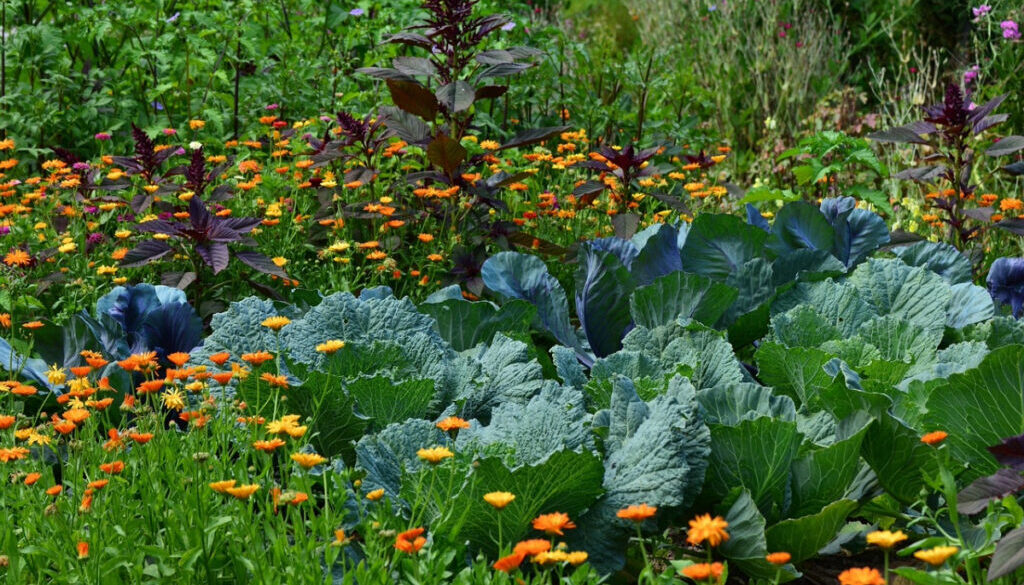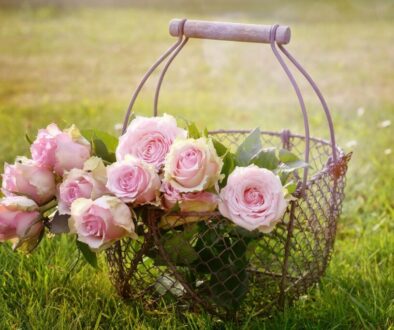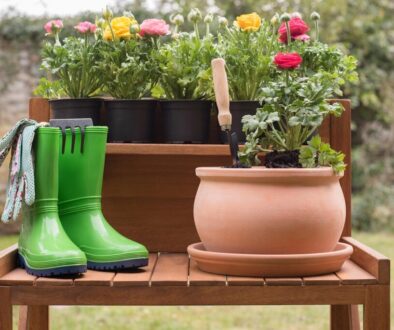Gardening Myths That Could Be Hurting Your Vegetables
More Fertilizer, More Problems: Why Less Is Often Better
The “More is Better” Myth: Why It Doesn’t Work in Gardening
Have you ever thought, “If a little fertilizer is good, a lot must be amazing”? You’re not alone! Many gardeners fall into this trap, thinking more nutrients mean bigger, better plants. But here’s the truth: overdoing it with fertilizer can hurt your garden more than it helps. Plants are a bit like people—too much of a good thing can throw everything off balance.
Over-fertilizing can cause what’s called “fertilizer burn,” where plants turn crispy and brown. It’s not pretty. Excess nutrients can also disrupt the soil’s natural ecosystem, leading to less healthy plants in the long run. So, if you’ve been tempted to sprinkle an extra handful of fertilizer for good luck, resist the urge. Your plants will thank you.
How Over-Fertilizing Can Backfire
Adding too much fertilizer is like overloading your plate at a buffet. It might seem like a feast, but it’ll only lead to regret. When plants are overwhelmed with nutrients, they can grow too quickly. You might think, “Great! Fast growth means success.” But rapid growth often leads to weak, floppy stems that can’t support themselves.
Another downside? Excess fertilizer can attract pests. Aphids and other bugs love to snack on those tender, over-fertilized leaves. Plus, the surplus nutrients can leach into the water supply, polluting nearby streams and ponds. Your garden’s overindulgence could become an environmental problem—yikes!
Signs You’ve Gone Overboard
So, how can you tell if you’ve been too generous with the fertilizer? Here are some red flags to watch for:
- Yellowing Leaves: Yes, this can be a sign of too much fertilizer, not just a lack of it.
- Stunted Growth: Oddly enough, too many nutrients can make plants stop growing.
- Salt Crust: If you notice a white, crusty layer on your soil’s surface, it’s a sign of fertilizer buildup.
If you spot any of these, it’s time to step back and reassess. Sometimes, a little less love is what your garden needs.
Finding the Sweet Spot
Now that you know the dangers of over-fertilizing, how do you find the perfect balance? Start by following the instructions on your fertilizer’s label. This isn’t the time to wing it—the recommended amounts are there for a reason.
Next, test your soil. A simple soil test can reveal what nutrients your garden actually needs. It might surprise you to learn that your soil is already rich in certain nutrients, meaning you can skip that extra dose of fertilizer altogether. Think of it as a health check-up for your plants.
Finally, consider using organic options like compost or aged manure. These slow-release fertilizers are less likely to cause issues and can improve soil health over time. Plus, they’re environmentally friendly—a win-win!
Less Is More: Trust Your Garden’s Natural Rhythm
Gardening is all about working with nature, not against it. Plants are smarter than we give them credit for and often find ways to thrive without constant interference. By cutting back on fertilizer, you’re not just saving money and reducing waste; you’re also letting your garden’s natural processes shine.
Remember, healthy soil is the foundation of a flourishing garden. Focus on building rich, nutrient-packed soil through composting and other sustainable practices. When your soil is in good shape, your plants won’t need nearly as much help from fertilizers.
The Bottom Line: Keep It Simple
The next time you’re tempted to reach for the fertilizer bag, take a moment to pause. Ask yourself, “Does my garden really need this, or am I just being overzealous?” Often, the answer will be no. Embrace the “less is more” philosophy, and you’ll be amazed at how much better your garden looks—and how much easier your life becomes.
Gardening should be fun and relaxing, not a source of stress. By keeping things simple and trusting the process, you’ll create a garden that’s not just beautiful but also healthy and sustainable. So go ahead, put down the fertilizer, and let your garden do its thing.
The Truth About Coffee Grounds: Do They Really Help Plants?
Coffee Grounds in the Garden: A Popular Trend
If you’re a coffee lover, you’ve probably wondered if your used coffee grounds can double as plant magic. After all, the idea sounds fantastic—turning something you’d normally throw away into a natural fertilizer. But do coffee grounds really help your plants, or is this just another gardening myth?
The short answer is: it depends. Coffee grounds can be a helpful addition to your garden, but only when used correctly. Let’s dive into the nitty-gritty and separate fact from fiction.
The Good: How Coffee Grounds Can Benefit Your Plants
Used coffee grounds are rich in organic matter, which can improve soil structure over time. This means they help create a looser, more aerated soil that’s easier for roots to grow through. Plus, coffee grounds can retain moisture, helping your garden stay hydrated longer.
Coffee grounds are also slightly acidic, making them beneficial for acid-loving plants like blueberries, azaleas, and roses. If you’re growing these, sprinkling a light layer of ground around their base might give them a small boost.
Let’s not forget that coffee grounds can attract worms, which are amazing for your soil. Worms break down organic material, improve soil aeration, and add nutrients through their castings. Think of them as tiny gardeners working around the clock!
The Bad: When Coffee Grounds Can Harm Your Garden
Despite the buzz around coffee grounds, they aren’t a one-size-fits-all solution. Using too much can backfire. Fresh coffee grounds, in particular, are highly acidic and can throw off your soil’s pH balance if over-applied. Most plants prefer neutral or slightly acidic soil, so adding too many coffee grounds could harm them.
Coffee grounds also contain caffeine—and while caffeine perks you up, it can be toxic to some plants. Studies suggest that caffeine can inhibit the growth of seedlings, so it’s best to avoid spreading fresh grounds near young plants.
Finally, coffee grounds can compact when applied in thick layers, creating a barrier that prevents water and air from reaching the soil. To avoid this, always mix coffee grounds with other organic matter like compost or mulch.
How to Use Coffee Grounds Effectively
The key to success with coffee grounds is moderation and proper application. Here are a few tips to get it right:
- Compost First: Mixing coffee grounds into your compost pile is one of the safest ways to use them. They’ll break down over time and contribute to a balanced compost mix. Aim for a ratio of about one part coffee grounds to three parts brown materials like dry leaves or paper.
- Sprinkle Sparingly: If you’re using coffee grounds directly in the garden, sprinkle them lightly and mix them into the top layer of soil. This prevents compaction and helps the grounds decompose more effectively.
- Know Your Plants: Use coffee grounds for acid-loving plants or those that thrive in rich, organic soil. Avoid using them near seedlings or plants sensitive to caffeine.
- Keep Pests in Mind: Some gardeners claim coffee grounds can repel pests like slugs and snails, but the results are mixed. Don’t rely on grounds alone as a pest control method.
The Bottom Line: Are Coffee Grounds Worth It?
So, do coffee grounds really help plants? The answer is yes—but only if you use them wisely. Coffee grounds are not a miracle cure for all gardening woes, but they can be a valuable addition to your garden when used correctly.
Think of them as a supplement, not a main course. Your plants will benefit from the nutrients and organic matter coffee grounds provide, but overdoing it can cause more harm than good. Balance is key.
And hey, even if your garden doesn’t need coffee grounds, your compost pile certainly will. So, the next time you brew a pot of coffee, don’t toss those grounds in the trash. Your garden (and the environment) will thank you.
Talking to Plants Works… Or Does It?: Exploring the Science
The Idea Behind Talking to Plants
Have you ever caught yourself chatting with your plants? Don’t worry; you’re not alone! The idea that talking to plants can help them grow has been around for ages. From gardeners whispering sweet nothings to their roses to parents encouraging their kids to read to houseplants, it’s a concept rooted in curiosity and love for greenery. But does it actually work? Or are we just indulging in a bit of wishful thinking?
The truth lies somewhere between science and sentiment. Let’s dig deeper to uncover what talking to plants does (if anything) and whether your leafy friends truly appreciate your chatter.
What Science Says About Talking to Plants
While plants don’t have ears or brains, they do respond to their environment in surprising ways. Research has shown that sound—including human voices—can influence plant growth. In a study conducted by the Royal Horticultural Society, researchers found that plants exposed to recorded voices grew slightly more than those in silence. Interestingly, female voices seemed to have a greater effect. So, if you’re serenading your plants, you might want to channel your inner soprano!
How does this work? The vibrations from sound waves could stimulate plant cells, encouraging growth. Plants are sensitive to their surroundings, and even subtle changes in vibrations might influence how they take up nutrients and water. While this doesn’t mean your philodendron understands your words, it does suggest there’s more to this practice than just wishful thinking.
The Psychological Benefits for You
Let’s face it—talking to plants isn’t just about them; it’s about you too. Engaging with your greenery can reduce stress and boost your mood. Studies have shown that interacting with plants—whether by watering, pruning, or yes, talking—can lower blood pressure and increase feelings of happiness.
When you talk to your plants, you’re creating a bond, which can make caring for them feel more rewarding. It’s like having a quiet, leafy companion who’s always there to brighten your day. And let’s be honest, plants are great listeners—no interruptions, no arguments, just pure, green zen.
Debunking the Myths
While the idea of chatting with plants is charming, it’s important not to overstate its effects. Talking alone won’t turn your succulents into towering giants or make your tomato plant produce double the fruit. Healthy growth depends on proper sunlight, water, and nutrients—not just your voice.
Also, be cautious of pseudoscience. Some claims, like “plants grow faster when you play classical music,” lack strong scientific backing. While certain sounds might have minor effects, they’re no substitute for good gardening practices. In short, feel free to talk to your plants, but don’t expect miracles.
How to Talk to Your Plants (If You Want To)
If you’re curious about experimenting, there’s no harm in giving it a try. Here are some tips for making the most of your plant conversations:
- Speak Gently: Loud or harsh sounds could potentially stress plants rather than help them. Keep your tone calm and soothing.
- Be Consistent: If you’re serious about testing this theory, try talking to your plants regularly and note any changes.
- Combine with Care: Remember, talking to plants is fun, but it’s not a substitute for proper care. Stick to good gardening habits.
- Get Creative: Read them a book, sing a song, or simply share your day. Your plants won’t judge your content.
The Verdict: Does Talking to Plants Really Work?
So, does talking to plants work? The answer isn’t black and white. While plants don’t “listen” in the way we do, sound vibrations might encourage subtle growth changes. More importantly, the act of talking to your plants can improve your well-being, making gardening even more enjoyable.
At the end of the day, whether it’s science or sentiment, talking to plants is a harmless and potentially beneficial habit. So, go ahead and share your secrets with your succulents or vent your frustrations to your ferns. Your leafy companions might not respond, but they’ll appreciate the attention. And who knows? You just might become the plant whisperer you’ve always dreamed of being!
 Watering in the Sun Burns Leaves: Fact or Fiction?
Watering in the Sun Burns Leaves: Fact or Fiction?
The Claim: Sun + Water = Scorched Leaves
If you’ve been gardening for a while, you’ve likely heard this classic piece of advice: never water your plants in the middle of a sunny day because it will burn their leaves. It’s one of those rules that feels so logical it’s hard to question. After all, wouldn’t droplets of water act like tiny magnifying glasses, concentrating the sun’s rays and frying your precious plants? Let’s dive into the science to find out if this claim holds any water—pun intended.
The Science: Can Water Drops Magnify Sunlight?
The good news for midday waterers is that this gardening myth has largely been debunked. Studies have shown that water droplets on leaves do not typically cause burning in direct sunlight. Why? The physics of water droplets acting as magnifying glasses doesn’t quite work as imagined. Most leaves are covered in a waxy layer that prevents water from sitting long enough to concentrate sunlight.
Research conducted on various plant types found no significant increase in leaf burn when watered during peak sunlight. So, unless your plants are covered in unusually large, persistent water droplets and sitting under extreme conditions, their leaves are safe from sunburn.
The Real Risks of Midday Watering
While watering in the sun doesn’t fry leaves, it’s not entirely risk-free. Here are a few reasons why gardeners still prefer morning or evening watering:
- Evaporation Woes: Watering during the hottest part of the day means more water evaporates before it reaches the roots. This wastes both water and your effort.
- Root Hydration: Plants absorb water through their roots, not their leaves. Watering when it’s cooler allows moisture to seep into the soil.
- Stress Reduction: Hot weather already stresses plants. Adding cold water during peak heat can sometimes shock their system, especially in very dry conditions.
So, while leaf burn isn’t a concern, watering at cooler times is still better for plant health and water efficiency.
When You Should Worry About Leaf Burn
Although water droplets don’t generally scorch leaves, there are some exceptions to keep in mind. Thin-leaved plants, like ferns, and those in harsh, high-altitude climates might be more susceptible. Additionally, certain chemicals or fertilizers mixed with water can cause sun damage if they sit on leaves under intense sunlight.
If you’re spraying your plants with anything other than plain water, make sure to follow the instructions and avoid applying during peak sun hours. Better safe than sorry!
Tips for Smart Watering
Whether you water in the morning, evening, or even midday, a few best practices can make all the difference:
- Target the Roots: Aim your watering can or hose at the base of the plant. This ensures water reaches where it’s needed most.
- Water Deeply: Give your plants a thorough soak so water penetrates deeply into the soil. Shallow watering encourages weak roots.
- Check Soil Moisture: Stick a finger into the soil to see if it’s dry before watering. Overwatering can harm plants as much as underwatering.
- Invest in Mulch: Mulch helps retain moisture in the soil, reducing the need for frequent watering. It also keeps roots cool on hot days.
- Use the Right Tools: Drip irrigation systems and soaker hoses can deliver water directly to the roots with minimal waste.
The Verdict: Myth Busted (Mostly)
So, does watering in the sunburn leaves? For most gardeners, the answer is a resounding no. The idea of water droplets magnifying sunlight and scorching plants is more fiction than fact. However, watering during cooler parts of the day remains the gold standard for keeping your garden hydrated and healthy.
Feel free to give your plants a drink when they need it, even if the sun is shining. Just remember to focus on the roots, and water deeply, and avoid chemical sprays under intense sunlight. Your plants won’t just survive—they’ll thrive.
Gardening myths are fun to explore, but nothing beats the satisfaction of understanding your plants and their needs. So go ahead, bust those myths, and enjoy your time in the garden!
Happy Gardening!











